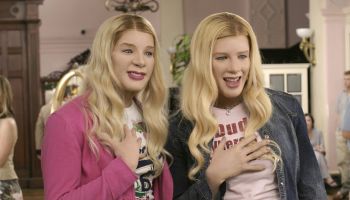Uterine Fibroids: Preventing, Shrinking & Avoiding Surgery
Most women with fibroids suffer severe discomfort, distended bellies, pain, and excessive bleeding. And the proposal of surgery by most of their doctors is all too common. But some people have figured out a way to shrink fibroids and avoid surgery all together…
It’s something many women can not conceive. They say to themselves, “It’s genetic. My mother, aunts, and sister have them, so I was bound to develop them also…”. Please know that we are not doomed to suffer the same ailments, conditions and diseases our family suffers or suffered. If the body is fed what it needs, it knows how to heal itself.
But today’s statistics are frightening and shocking. In a recent US study by BioMed Central Women’s Health, with randomly selected women between 35 to 49 years, who were screened by self-report, medical record and sonography, the incidence of uterine fibroids by age 35 was 60% among African-American women, increasing to greater than 80% by age 50, whereas Caucasian women showed an incidence of 40% by age 35, and almost 70% by age 50.
When it comes to fibroids, they can be prevented. And there are ways to shrink them naturally and avoid surgery. But how can we do any of this if most times women don’t know they are ‘feeding‘ their fibroids?
If you have fibroids and drink and eat COFFEE, CHOCOLATE, SODAS, TEAS/ICE TEAS and BEEF/CHICKEN/TURKEY, then you may be ‘feeding’ your fibroids. Instead of helping your body shrink them, they may grow larger. In my practice these are the first foods I recommend be eliminated from the diet. Estrogen dominance and an overloaded liver are some causes for uterine fibroid risk, and the above list of foods cause more hormonal imbalance. Even organic versions or decaffeinated versions of the above foods. What we eat determines whether we put ourselves at risk for fibroids. Period. It’s so true to the point that an Italian scientist in studies showed women who eat plenty of vegetables cut their fibroid risk in half, while women who eat red meat double their risk!
And there is a controversy regarding soy. The following is very important to understand: Soybeans contain the compounds genistein and daidzein, which are estrogenic and reduce the risk of breast cancer as well as reduce hot flashes and other types of menopausal discomfort. If they reduce the risk of cancer, then the thought of them causing fibroids is not true. The type of estrogens that are harmful to a woman’s health are xenoestrogens. This type of xenohormone imitates estrogen. These estrogens are foreign to the human body and the bad news is that xenoestrogens are not only in plastics and styrofoam, but its in the hormones the stockmen and farmers use to fatten up their animals for market – beef, chicken, turkey, pork. These xenoestrogens put you at risk of estrogen dominance, and in turn make a woman more prone to developing abnormal cell growth, or ‘feeding’ abnormal cells.
With that said, studies also show uterine fibroids to be more common than blue eyes. They are painful and cause excessive menstrual bleeding. In my years of experience I also tell clients and patients, “Do not wear tampons”. Your body does NOT eliminate monthly menstrual waste properly if something is obstructing the vaginal tract. And Ladies, a tampon can never absorb a menstrual blood clot. Wear organic maxi-pads. It is necessary to avoid the chlorine and other chemicals in traditional pads so as not to suffer heavy menstrual bleeding, itching, odor, and vaginal discomfort in the form of discharge all due to the interaction of these chemicals with your body chemistry.
Use the following combination of supplements for minimum 6-8 weeks (depending on the severity and size of fibroids) to help the body shrink fibroids, promote hormonal balance, reduce heavy uterine bleeding, decrease inflammation and pain, and stabilize mood:
Ladies, studies show 2/3 of hysterectomies are unnecessary. Also, according to The Lancet, a myomectomy carries a high risk of adhesion formation (up to 60%) and uterine rupture, especially after laparascopic resection. And, according to Obstetrics and Gynecology International, Uterine Artery Embolisation (UAE), one of the newest methods used to remove fibroids, is now showing superior risk compared to hysterectomy.
Via: http://drjulissa.wordpress.com/2011/08/29/uterine-fibroids-preventing-avoiding-surgery/














